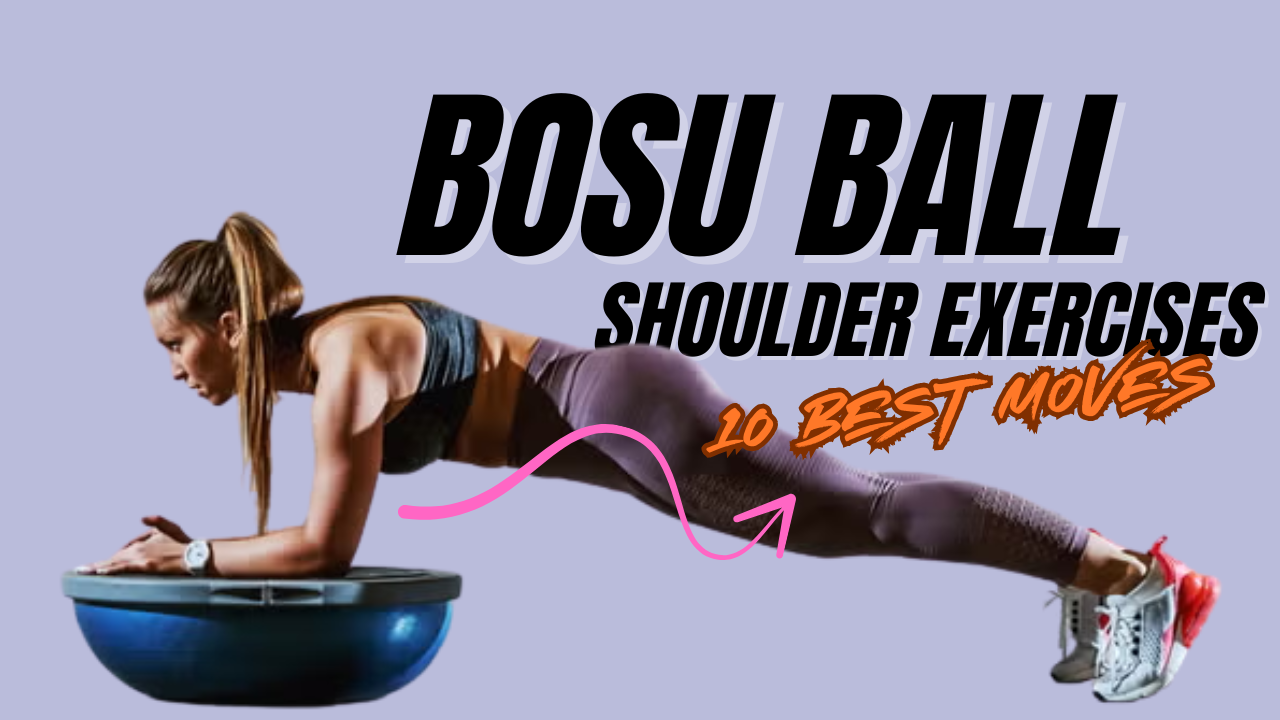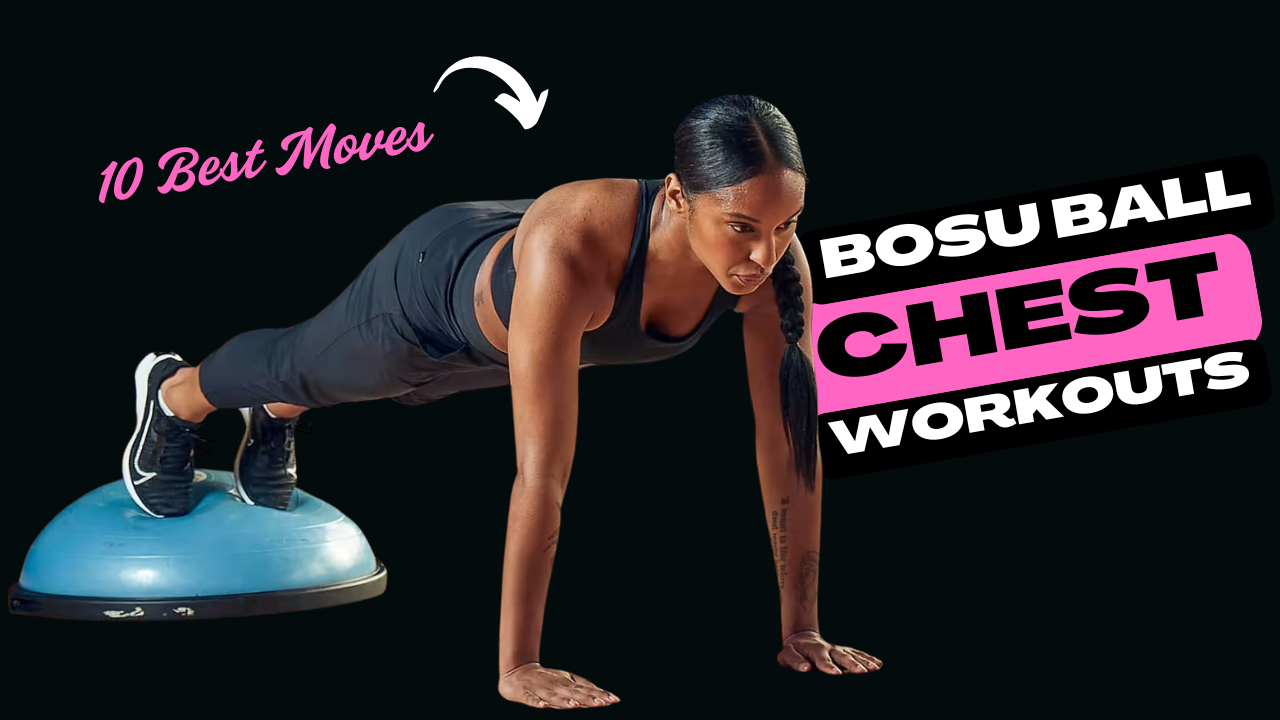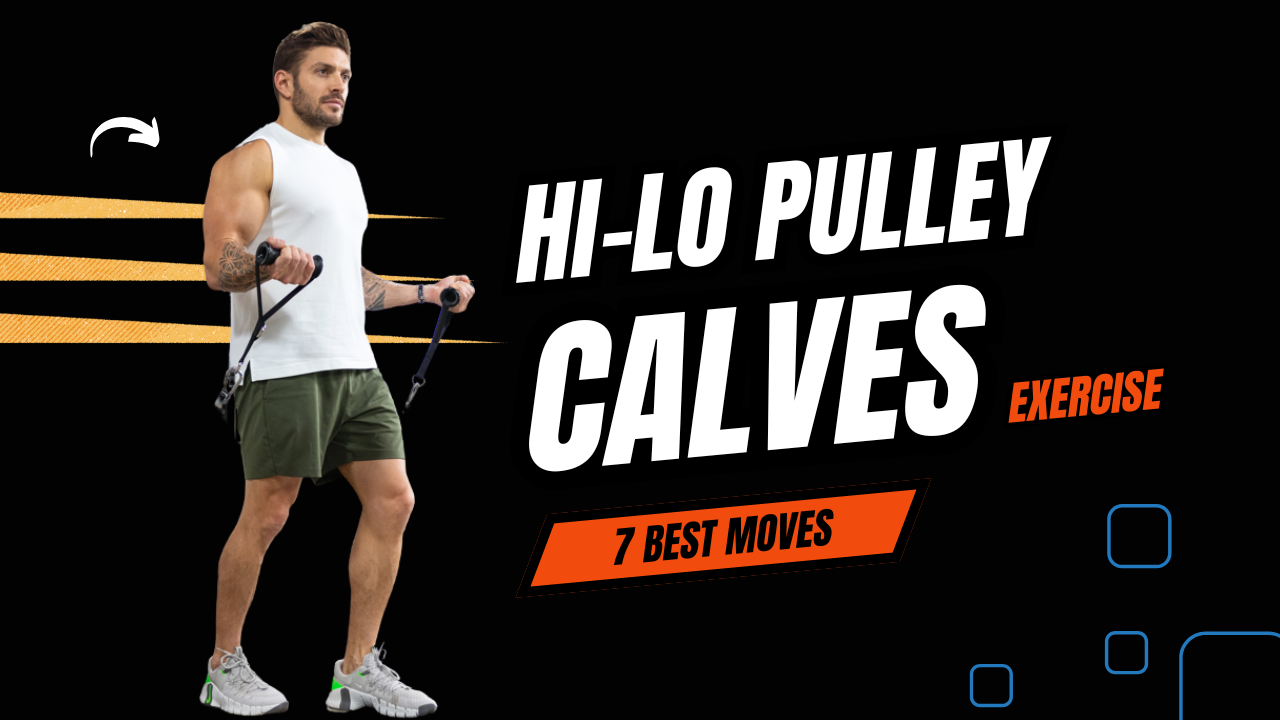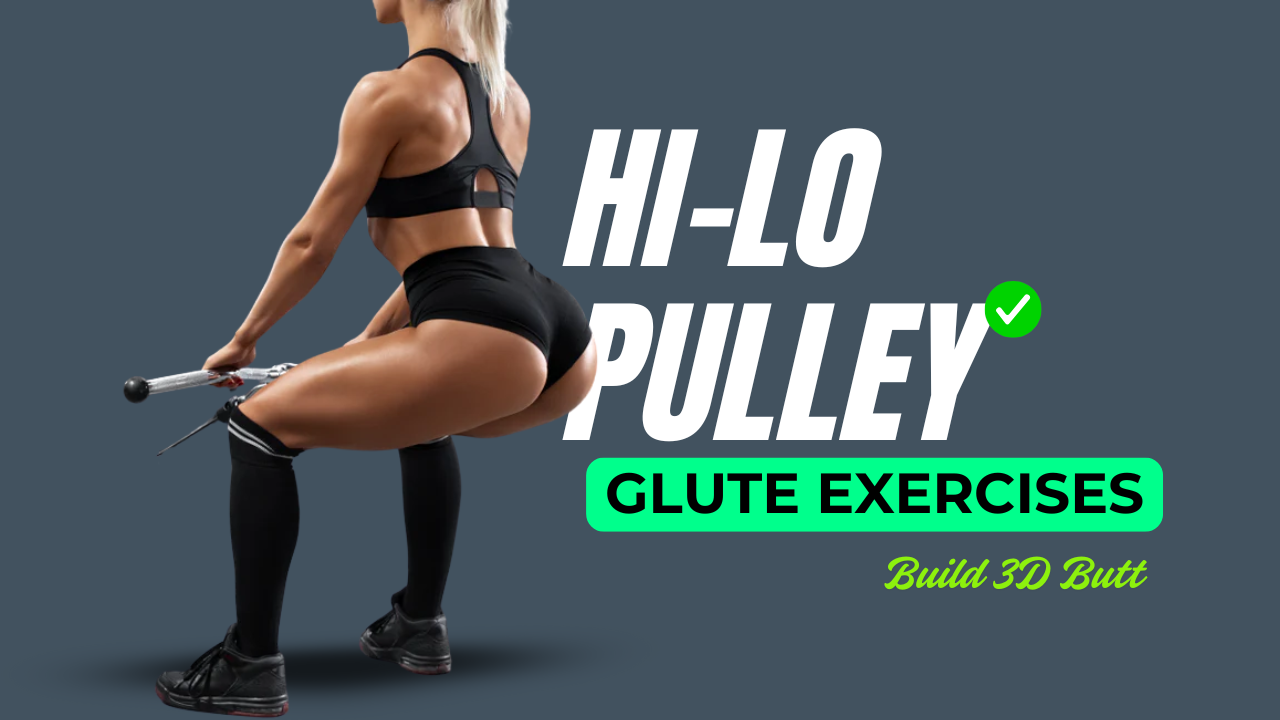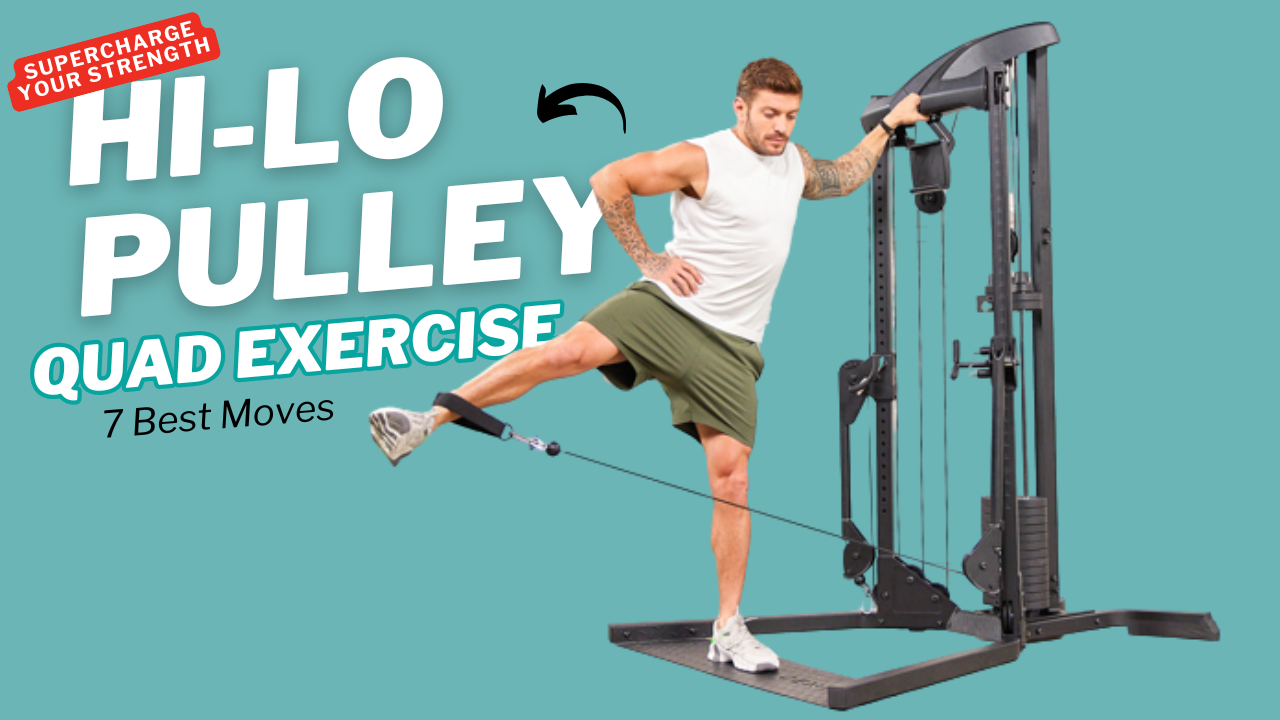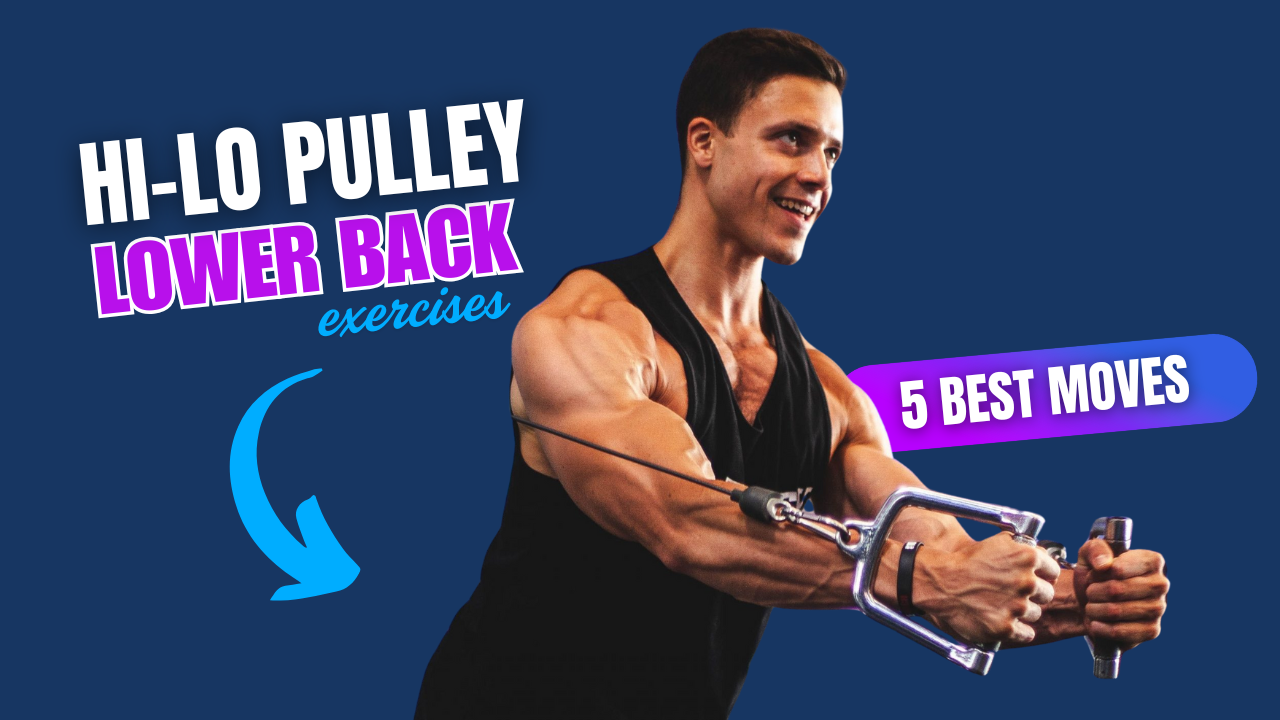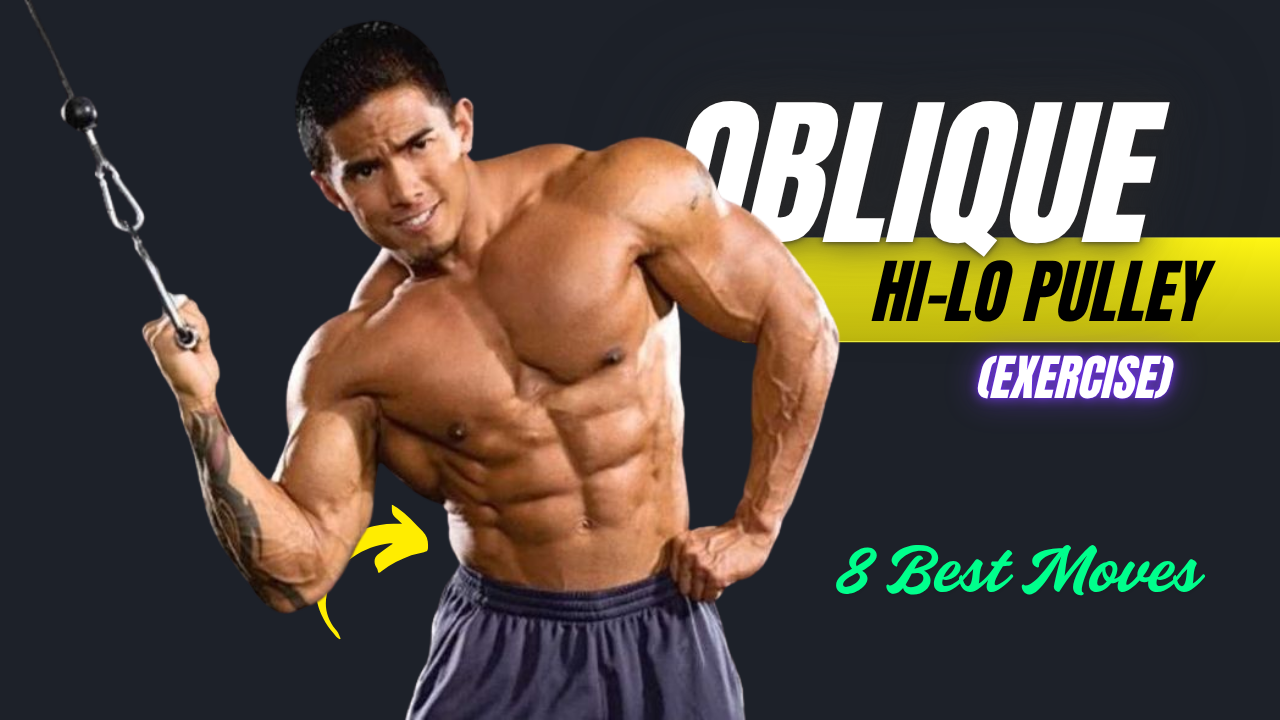While most people associate kettlebells with explosive lower-body workouts, these versatile tools can be your secret weapon for sculpting a defined, powerful back.
Whether you’re looking to enhance your posture, improve pulling strength, or simply create a V-tapered upper body, kettlebells offer functional, real-world strength that machines can’t replicate.
Did you know?
Training your back isn’t just about looking good. A strong back reduces injury risk, supports your spine, and boosts your performance in nearly every other exercise. From rows to snatches, kettlebells challenge your stabilizers, grip, and core — all while blasting your lats, rhomboids, traps, and erectors.
Let’s dive into 10 kettlebell back exercises that deliver fast results in both strength and muscle definition — plus a “how-to” guide for each.
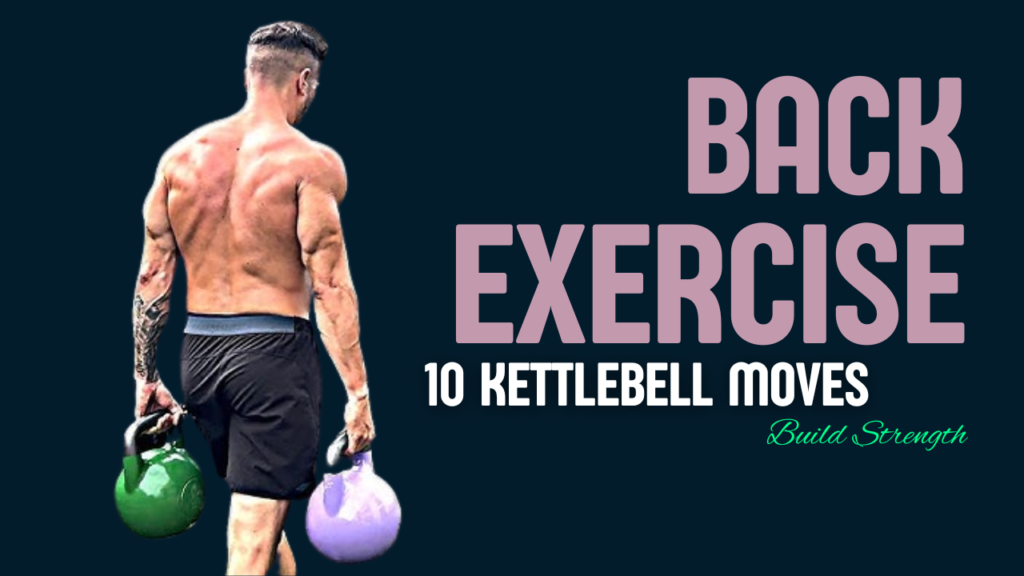
Table of Contents
30-Day Results from Kettlebell Back Exercises
| After 30 Days You May Experience… | Why It Happens |
|---|---|
| Improved posture and upright stance | Strengthened postural muscles like rhomboids and erector spinae support spinal alignment. |
| Visible back muscle definition | Regular stimulation of lats, traps, and delts helps sculpt a leaner, more defined back. |
| Increased core and back strength | Many kettlebell moves are compound and engage the core, leading to strength gains. |
| Reduced lower back discomfort | Strengthening the posterior chain eases pressure on the spine and stabilizes movement. |
| Enhanced grip and forearm endurance | Kettlebell handles challenge your grip with every set, building grip strength fast. |
| Better balance and coordination | Unilateral movements improve muscular control and body awareness. |
| Boosted metabolic rate | Full-body and compound lifts increase calorie burn even at rest. |
| Improved flexibility and mobility | Hip hinges and rows naturally stretch tight muscles while strengthening them. |
| More confidence in your physique | Visible results, stronger posture, and better movement improve body confidence. |
| Higher energy levels throughout the day | Regular training boosts circulation, mood, and energy thanks to improved blood flow. |
Also Read: 14 Dumbbell Exercises to Strengthen Your Lower Back & Banish Pain
Do’s and Don’ts of Kettlebell Back Exercises
| Do’s | Don’ts |
|---|---|
| Warm up your shoulders, hips, and spine before starting. | Don’t skip warm-ups—it increases the risk of injury. |
| Focus on form—maintain a neutral spine and stable core. | Don’t round your back while lifting; it stresses your spine. |
| Start with a manageable weight and increase gradually. | Don’t ego lift with heavy weights if your form isn’t perfect. |
| Engage your core during all back movements. | Don’t let your core relax—it leads to imbalance and poor stability. |
| Control the movement both on the way up and down. | Don’t use momentum to lift the kettlebell. |
| Use both unilateral and bilateral exercises for balance. | Don’t ignore muscle imbalances—they can lead to long-term issues. |
| Incorporate rest days for recovery and muscle growth. | Don’t train your back every day without rest. |
| Keep your shoulders packed during swings and pulls. | Don’t shrug or overuse your traps during lifts. |
| Stay consistent with your training schedule. | Don’t expect overnight results—progress takes time. |
| Listen to your body—adjust intensity when needed. | Don’t push through sharp pain or discomfort. |
1. Kettlebell Bent-Over Row
Targets: Lats, rhomboids, traps
How to:

- Hold a kettlebell in each hand.
- Hinge at the hips until your torso is at about a 45° angle.
- Keep your core tight and pull the bells towards your ribs.
- Squeeze your shoulder blades, lower slowly, and repeat.
Pro Tip: Keep your spine neutral to avoid rounding your lower back.
Also Read: 13 Best Dumbbell Triceps Workouts for Sleeve-Busting Arms
2. Single-Arm Kettlebell Row
Targets: Mid-back, core, obliques
How to:
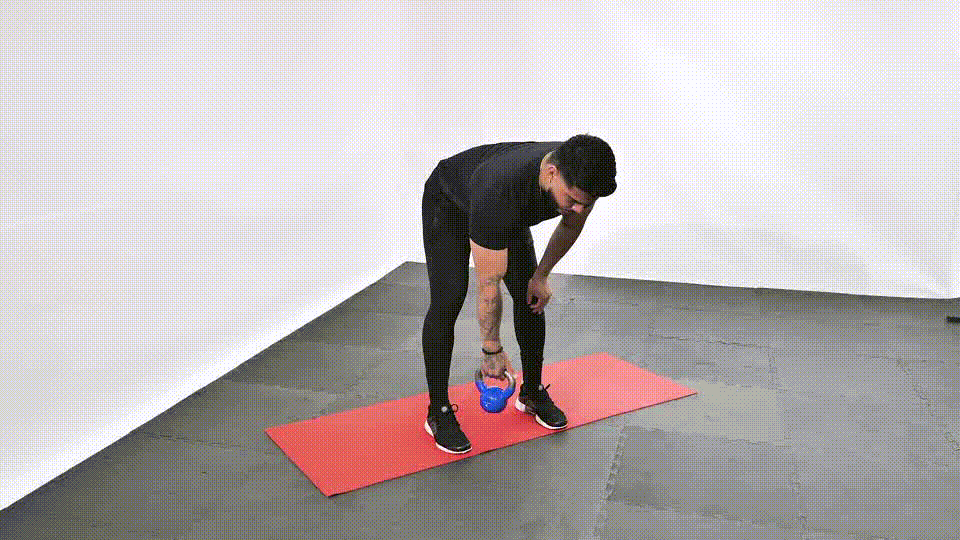
- Place your left hand and knee on a bench.
- With your right hand, grip a kettlebell and row it toward your waist.
- Keep your elbow tight and avoid rotating your torso.
- Switch sides after completing a set.
Bonus: This move improves imbalances and activates core stabilizers.
3. Kettlebell Renegade Row
Targets: Upper back, core, triceps
How to:
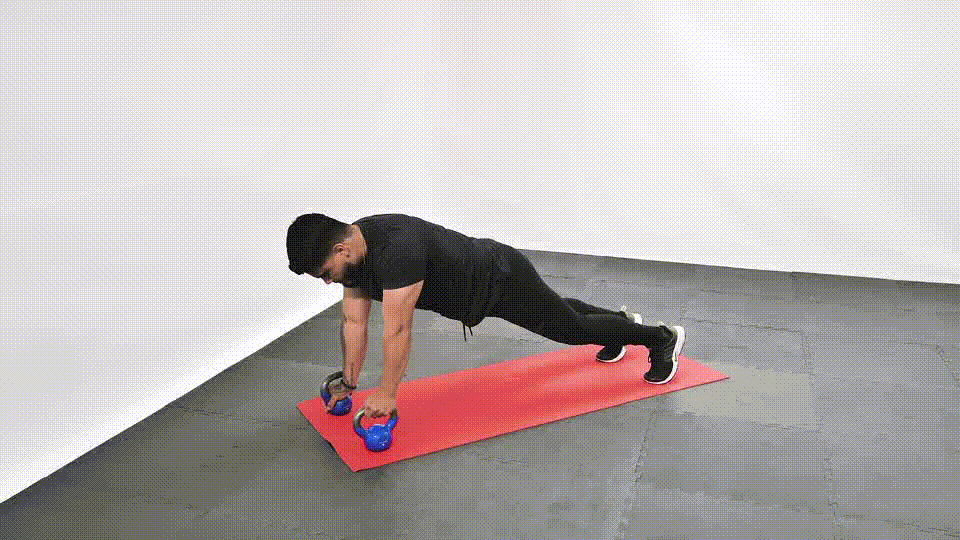
- Get into a plank position with each hand gripping a kettlebell.
- Row one kettlebell up while stabilizing with the other arm.
- Keep hips level and avoid rocking side to side.
Myth-Buster: Many believe back work requires heavy weights — but stability-focused movements like this challenge the back just as intensely.
4. Kettlebell Deadlift
Targets: Lower back, glutes, hamstrings
How to:
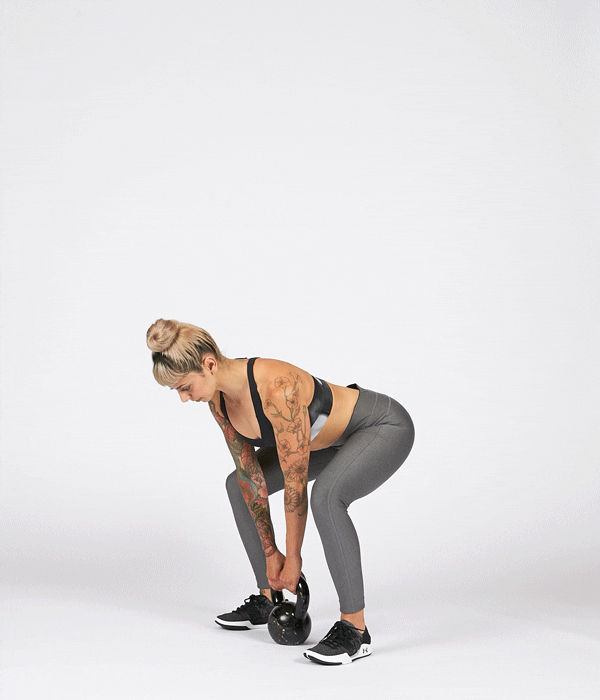
- Stand with feet hip-width apart, kettlebell between your feet.
- Hinge at the hips, grab the bell, and drive through your heels to stand up.
- Lower it back with control.
Why it works: Builds foundational strength and bulletproofs the posterior chain.
Also Read: 11 Dumbbell Back Workouts for a Stronger, V-Tapered Physique
5. Kettlebell Suitcase Deadlift
Targets: Obliques, erectors, traps
How to:
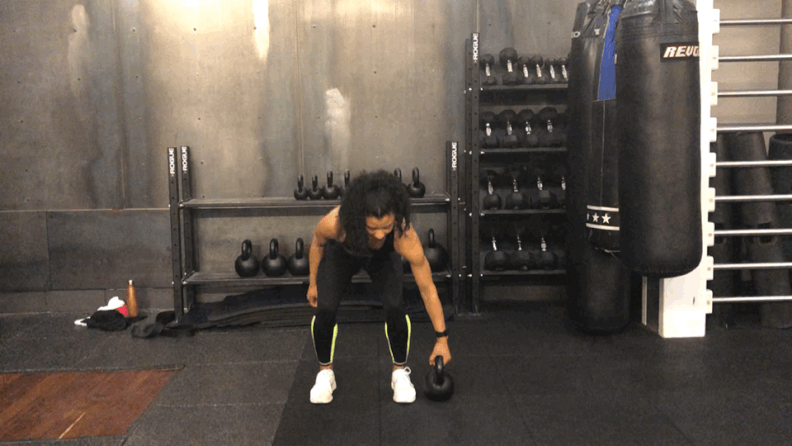
- Place one kettlebell to the side of one foot.
- Stand tall, hinge and grab it with one hand.
- Deadlift it up while keeping your torso upright.
- Switch sides.
Interesting Fact: This asymmetrical load forces your body to resist lateral bending, firing up stabilizers.
6. Kettlebell High Pull
Targets: Rear delts, traps, upper lats
How to:
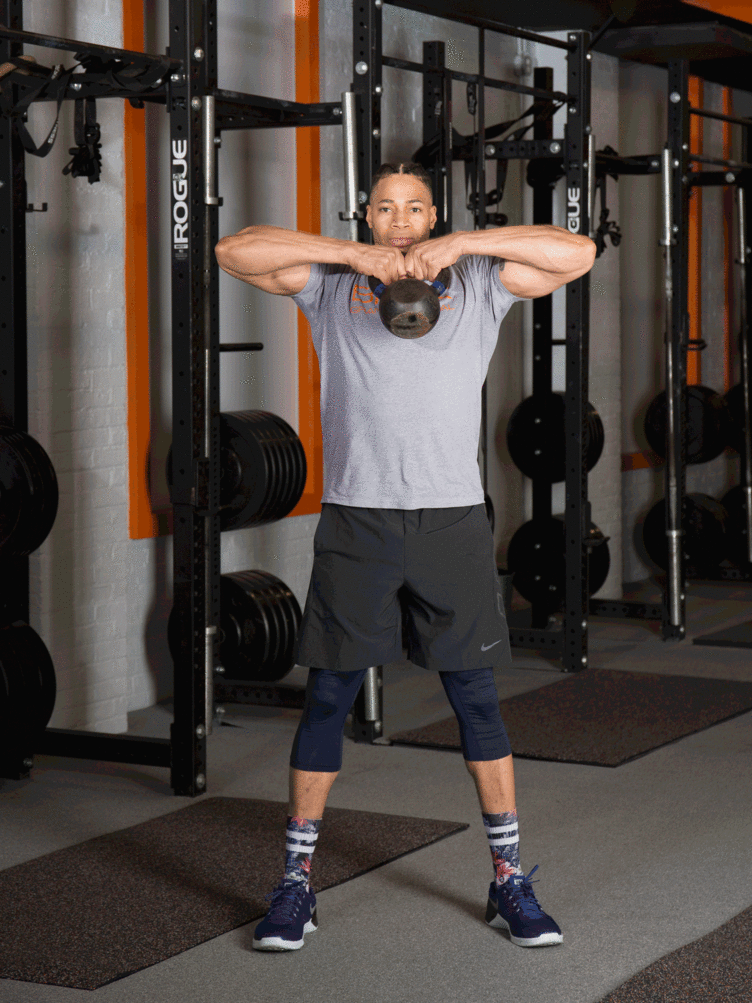
- Hold a kettlebell with both hands.
- Pull it upward from hip level to chest height, leading with elbows.
- Control the descent.
Good to Know: This movement bridges the gap between strength and power, aiding explosiveness.
7. Kettlebell Swings (with Focus on Back Engagement)
Targets: Lats, lower back, glutes
How to:
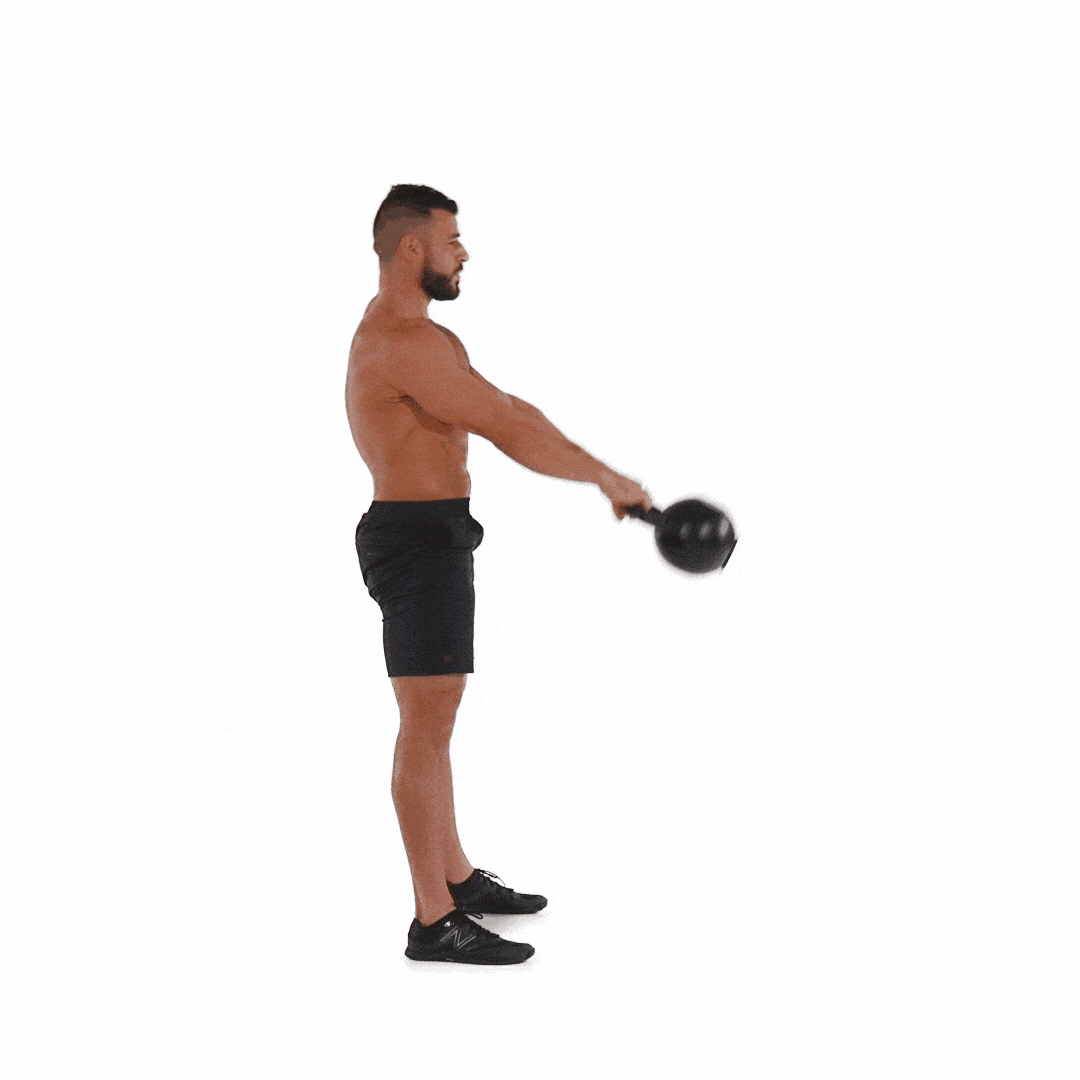
- Start with feet shoulder-width apart.
- Swing the bell back through your legs and drive it forward using hip thrusts.
- Maintain tension in your lats to keep the kettlebell close.
Pro Tip: Keep shoulders packed and spine neutral throughout.
Quick Fact: Proper swings work your back more than you think — just avoid turning it into a shoulder raise.
Also Read: 12 At-Home Lower Back Exercises Using Just Bodyweight
8. Kettlebell Clean
Targets: Traps, lats, posterior chain
How to:
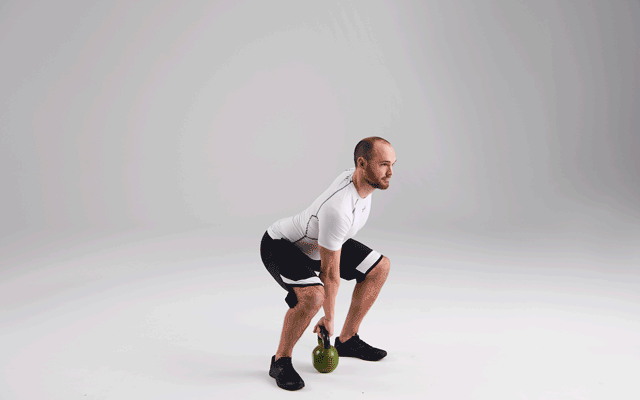
- From the floor or hang position, pull the kettlebell up and catch it in the front rack.
- Your elbow should stay close to your ribs; the bell lands softly on your forearm.
Bonus: A clean leads into other compound lifts like the press or front squat.
9. Kettlebell Gorilla Row
Targets: Mid-back, lats, biceps
How to:

- Place two kettlebells on the floor.
- Stand in a hip hinge, grip both, and row one kettlebell at a time while the other stays grounded.
- Alternate rows without twisting.
Why Try It: This variation maximizes tension and promotes muscle symmetry.
10. Kettlebell Reverse Fly
Targets: Rear delts, rhomboids, traps
How to:
- Hold two light kettlebells, and hinge at the hips.
- With a slight bend in the arms, raise the bells out to the sides like wings.
- Lower with control.
Use Caution: Start with a lighter weight to avoid overloading delicate rear shoulder muscles.
Also Read: 11 Abductor Exercises Using Equipment That Boosts Hip Strength
Final Thoughts:
Your back deserves more than cables and lat pulldowns. Kettlebells offer functional, total-back development with added benefits like grip strength, core engagement, and posture correction.
Incorporate 3–4 of these exercises into your weekly routine, and you’ll not only feel the difference — you’ll see it too.
Want a sculpted back with real strength behind it? Grab a kettlebell and start pulling.
Frequently Asked Questions (FAQs)
Can kettlebell exercises really build back muscles?
Yes! Kettlebells are highly effective for building back strength and muscle definition. They activate multiple back muscles — including lats, traps, and spinal erectors — especially during compound movements like rows, swings, and cleans.
How many times a week should I do kettlebell back workouts?
For most people, 2–3 times per week is ideal. This allows enough stimulus for muscle growth while giving your back time to recover.
Do I need two kettlebells to do these exercises?
Not necessarily. Many exercises like the single-arm row, suitcase deadlift, and clean can be done effectively with just one kettlebell. A pair can be useful but isn’t required.
Can kettlebell back exercises help with posture?
Absolutely. Strengthening your back muscles improves posture by pulling your shoulders back and supporting your spine. Exercises like bent-over rows and reverse flys are particularly beneficial.
Are kettlebell swings bad for your lower back?
Only if done incorrectly. Proper form, including a neutral spine and hip-driven motion, makes swings a safe and effective lower back and posterior chain exercise. Avoid rounding your back.
Is it okay to do these exercises at home?
Yes! Kettlebells require minimal space and no machines, making them perfect for home workouts. Just ensure you have enough room to safely swing or lift the kettlebell.
Can I combine kettlebell back exercises with other muscle group workouts?
Definitely. Kettlebell workouts can be part of a full-body split or paired with legs, core, or even upper body push exercises, depending on your training goals.
Will these exercises help with back fat?
While you can’t spot-reduce fat, these exercises help build lean muscle, boost metabolism, and improve overall fat loss when combined with proper nutrition.
Are kettlebell back exercises suitable for beginners?
Yes, many of these exercises are beginner-friendly, especially when using lighter weights. Always focus on form and control before progressing to heavier loads.
